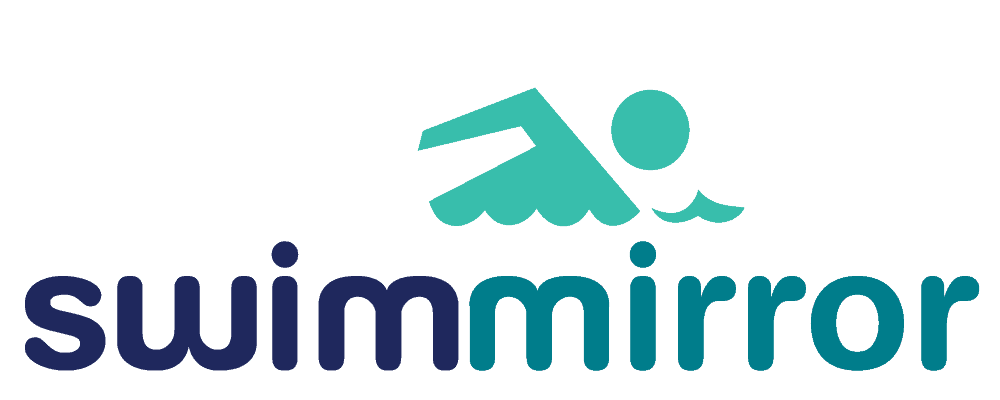
- Swimming Habits

Constructing a Successful Swim Training Program: A Comprehensive Guide
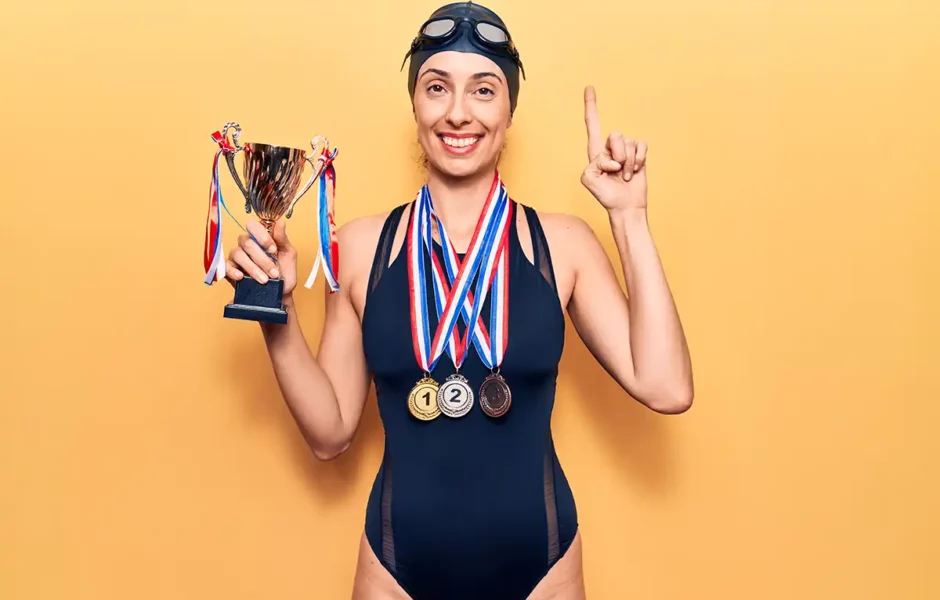
Swimming isn’t just a sport; it’s a science. It’s a delicate balance of strength, speed, and stamina, all working in harmony to propel you through the water. Whether you’re a competitive swimmer aiming to shatter personal records or a fitness enthusiast seeking to boost your performance, a well-structured swim training program is paramount. This article will unfold the secrets behind constructing an effective swim training program, one that not only elevates your performance but also prevents injuries and ensures long-term success.
Table of Contents
Understanding the Basics of a Swim Training Program
A successful swim training program isn’t built overnight. It’s a meticulously planned routine that evolves over time, aiming to peak your performance for the big competition. It’s a careful amalgamation of specific training cycles and phases, each tailored to optimize your training and performance in both the short and long term.
The Macrocycle
The macrocycle is the big picture. It’s a seasonal or yearly plan that works backward from major competitions you aim to compete in. For instance, you could divide your macrocycle by short-course or long-course season, each ending with the corresponding championships.
The Mesocycle
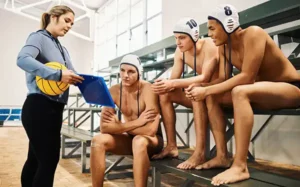
- General preparation: Training the basics to build a solid foundation
- Specific preparation: Focusing on specific skills and capabilities
- Pre-competition: Race pace training and tapering
- Transition: The period after a competition, before a new macrocycle begins.
The Microcycle
Microcycles are weekly breakdowns within a mesocycle. Each microcycle has a specific focus for the week, which will be the emphasis of the daily workouts. This could be endurance, sprints, lactate threshold, lactate production, strength, or technique. Dryland training and recovery days would also be incorporated.
Injury Prevention in a Swim Training Program
A winning swim training program is of no use to an injured athlete. Therefore, while developing your training plan, it’s essential to monitor training load. Ensure changes in load happen gradually, even when transitioning from one phase to the next, to reduce the likelihood of injury.
Execution and Evaluation of the Swim Training Program
Once your training plan is set, it’s time to execute. Track the details of your workouts, regularly implement test sets to gauge progress, identify gaps in the current program, and make necessary revisions as you go through the season. At the end of the year, evaluate the effectiveness of your training plan in achieving your goals to improve future training.
The Distance Debate in Swim Training
There’s a long-standing debate on training distances and optimal physical loading for swimmers. The traditional hard work-high volume philosophy has increasingly come under scrutiny. The world outside swimming is constantly evolving, striving to find faster, better, and more efficient ways to do things.
In recent years, the swimming world has witnessed an influx of new ideas, training approaches, and coaching methodologies. These include High-Intensity Interval Training (H.I.I.T), Polarized Training (P.T), and Ultra Short Race Pace Training (U.S.R.P.T). However, there’s no one-size-fits-all approach.

Sprint Training for Swimmers
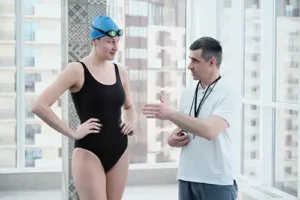
Strength Training in a Swim Training Program
Strength training can enhance your power, speed, and technique in the water while reducing the risk of injury. It targets specific muscles and movements crucial in the water, such as the latissimus dorsi for the pull phase of the stroke or the glutes for the kick phase.
Best Strength Exercises for Swimmers
Some of the best weight training exercises for swimmers include:
- Pull-ups: Enhances latissimus dorsi strength
- Lat Pulldowns: Works the latissimus dorsi, biceps, and shoulders
- Dumbbell Rows: Targets lats and upper back muscles
- Bench Press: Strengthens the chest, shoulders, and triceps
- Push-ups: A bodyweight exercise for the chest, shoulders, and triceps
- Squats: An effective exercise for the glutes, quads, and hamstrings
- Lunges: Targets the glutes, quads, and hamstrings
- Deadlifts: A full-body exercise targeting the glutes, hamstrings, lower back, and core muscles
- Planks: A core exercise that helps swimmers develop better body position
- Russian Twists: Targets the obliques, aiding better rotation during the stroke
Key Factors of Weight Training for Swimmers
When incorporating weight training into your swim training program, consider the following factors:
- Specificity: The exercises should target specific muscle groups and movement patterns involved in swimming.
- Progression: Gradually increase the intensity and volume of workouts as you become stronger.
- Balance: Aim to target all major muscle groups used in swimming.
- Recovery: Allow for adequate recovery time between workouts.
- Integration with Swim Training: Schedule strength training workouts to complement your swim training schedule.
- Consistency: Incorporate strength training into your regular training routine consistently.
- Safety: Use proper form and technique when performing exercises to prevent injury.
A Basic Training Program for Swimmers
Here’s a basic strength training program for swimmers:
Day 1: Upper Body
- Pull-ups: 3 sets of 10 reps
- Lat pulldowns: 3 sets of 12 reps
- Dumbbell rows: 3 sets of 12 reps
- Bench press: 3 sets of 10 reps
- Planks: 3 sets of 30-second holds
Day 2: Lower Body
- Squats: 3 sets of 10 reps
- Lunges: 3 sets of 10 reps each leg
- Deadlifts: 3 sets of 10 reps
- Push-ups: 3 sets of 12 reps
- Russian twists: 3 sets of 12 reps each side
Utilizing SwimMirror in Your Swim Training Program
While a well-planned swim training program is vital, an efficient tool like SwimMirror can be the game-changer in your training routine. SwimMirror allows you to see your technique in real-time as you practice, enabling instant improvement. It requires no complicated setup; just place it down and start swimming.
What’s more, SwimMirror is lightweight, corrosion-resistant, and shatterproof. Its maintenance is as simple as it gets – just rinse and air dry for future use. Incorporating SwimMirror into your swim training program can revolutionize your training, enhance your technique, and ultimately, improve your performance in the pool.
Building a successful swim training program is a journey. It’s about understanding your body, setting clear goals, and gradually pushing your limits. It’s about balancing your workouts, allowing for recovery, and consistently progressing towards your goals. And most importantly, it’s about utilizing tools like SwimMirror to enhance your technique and performance. So, get started on constructing your swim training program today, and experience the difference it makes in your swimming performance.
Other resources:
https://www.usaswimming.org/
https://swimmingcoach.org/
Related Posts:
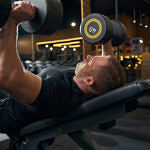
Dive Into Our Latest News
Email address:
- Amanda Beard
- Kids Swim Training
- Rowdy Gaines
- Swim Training
- SwimMirror News
- Uncategorized

IMAGES
VIDEO
COMMENTS
Lat Pulldowns: Works the latissimus dorsi, biceps, and shoulders. Dumbbell Rows: Targets lats and upper back muscles. Bench Press: Strengthens the chest, shoulders, and triceps. Push-ups: A bodyweight exercise for the chest, shoulders, and triceps. Squats: An effective exercise for the glutes, quads, and hamstrings.